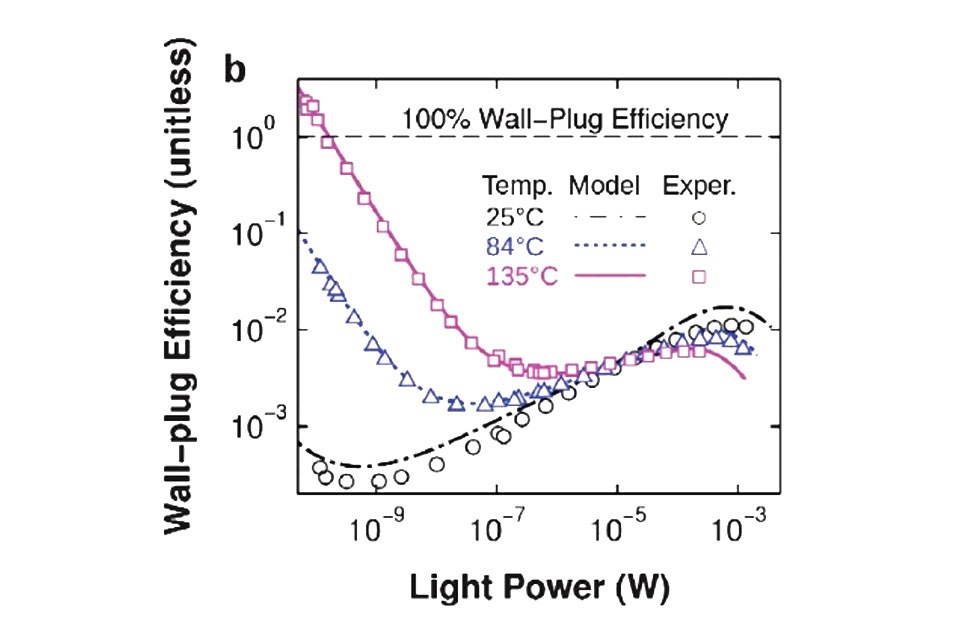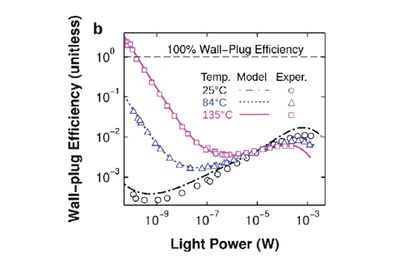At High Environmental Temperatures and at Very Low Power LED's Wall Plug Efficiency Exceeds 100%
For the first time, researchers have demonstrated that an LED can emit more optical power than the electrical power it consumes. Although scientifically intriguing, the results won’t immediately result in ultra-efficient commercial LEDs since the demonstration works only for LEDs with very low input power that produce very small amounts of light and emits primarily in the invisible IR range of 2.4 µm.
The researchers, Parthiban Santhanam and coauthors from MIT, have published their study in a recent issue of Physical Review Letters.
As the researchers explain in their study, the key to achieving a wall plug efficiency above 100%, i.e., “unity efficiency,” is to greatly decrease the applied voltage. According to their calculations, as the voltage is halved, the input power is decreased by a factor of 4, while the emitted light power scales linearly with voltage so that it’s also only halved. In other words, an LED’s efficiency increases as its output power decreases.
In their experiments, the researchers had to reduce the LED’s input power to just 30 picowatts and to measure an output of 69 picowatts of light - an efficiency of 230%. The physical mechanisms worked the same as with any LED: when excited by the applied voltage, electrons and holes have a certain probability of generating photons. The researchers didn’t try to increase this probability, as some previous research has focused on, but instead took advantage of small amounts of excess heat to emit more power than consumed. This heat arises from vibrations in the device’s atomic lattice, which occur due to entropy. To achieve this 230% efficiency the environmental temperature has to be at least at 135°C.
This light-emitting process cools the LED slightly, making it operate similar to a thermoelectric cooler. Although the cooling is insufficient to provide practical cooling at room temperature, it could potentially be used for designing lights that don’t generate heat. When used as a heat pump, the device might be useful for solid-state cooling applications or even power generation.
Theoretically, this low-voltage strategy allows for an arbitrarily efficient generation of photons at low voltages. For this reason, the researchers hope that the technique could offer a new way to test the limits of energy-efficiency electromagnetic communication.
Remark from LED professional: This research demonstrates a very interesting physical property of LED structures, but the recent LEDs are not designed to gain useful advantage for lighting issues out of this effect. It has also to be clearly noticed that the demonstrated effect does not affect the laws of thermodynamics. Today it is not foreseeable if this findings will ever end up in an useful lighting application. It is much more likely that one of the other applications, described from the researchers, could become reality.


